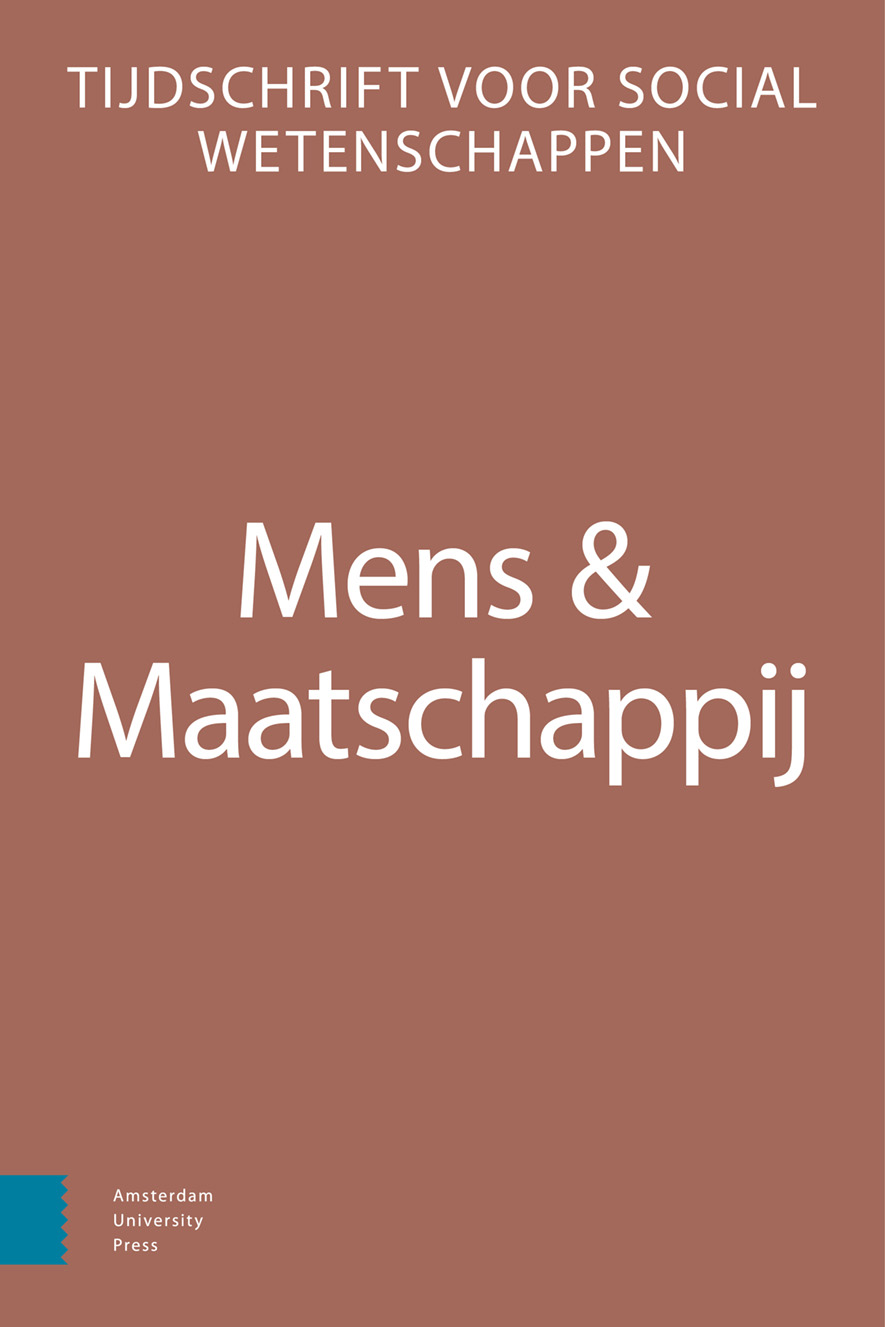- Home
- A-Z Publications
- Mens & Maatschappij
- Previous Issues
- Volume 86, Issue 1, 2011
Mens & Maatschappij - Volume 86, Issue 1, 2011
Volume 86, Issue 1, 2011
-
-
Gulzige organisaties en de verdeling van betaalde en onbetaalde arbeid binnen huishoudens
More LessFirm’s time greediness and the division of labour in the household .
Although the body of literature documenting the division of labour between partners is large and continuously expanding, little is known about how demands and expectations from the workplace affect the division of labour between partners and how spouses use strategies to manage, or ‘govern’, the conflicting demands of work and family. Using data on 242 Dutch female employees, their partners and their employers, the results from multilevel analysis show that the more demanding the woman's job is, the larger her share in paid work and the smaller her share in household work are. These effects are moderated by both workplace governance practices and household governance practices. effects are moderated by both workplace governance practices and household governance practices.
-
-
-
Eenheid of verdeeldheid? - Burgerschap in een gedifferentieerd voortgezet onderwijssysteem
More LessUnited or dispersed? Civic competences in a differentiated schooling system .
This paper examines whether there are differences in civic competences between secondary school children on the basis of school type, gender, ethnicity and parents’ education, and whether such differences are smaller in schools that devote greater attention to civic education. Using survey data form students and school principals in fifteen secondary schools in the Netherlands, we examine civic competences relating to ‘democratic behaviour’, ‘socially responsible behaviour’, and ‘dealing with social differences’. Our analyses show that students differ significantly in how they judge their own competences in these domains. Furthermore, differences in socially responsible behaviour between students of different levels of parental education are smaller in schools that pay much attention to civic education. No evidence for mitigating effects of a school’s attention to civic education emerged for either democratic behaviour or responsible behaviour.
-
-
-
Voorspellers van vertrouwen in de buurt - Sociale cohesie in Amsterdam
More LessAuthors: Lonneke van Oirschot, Jeroen Slot & Emmie van OirschotPredictors of neighbourhood trust. Social cohesion in Amsterdam.
This research investigates whether Robert Putnam’s (2007) well-known findings on the negative influence of ethnic diversity on social cohesion hold in Amsterdam. In the present study neighbourhood trust is the measure of social cohesion. Using data from the ‘Living in Amsterdam’ monitor ( Wonen in Amsterdam, 2007 ), multilevel analysis shows that neighbourhood trust is lower in ethnically diverse neighbourhoods. Furthermore, the percentage of first generation non-Western immigrants and second generation non-Western immigrants is also negatively related to neighbourhood trust. The percentage of second generation non-Western immigrants affects neighbourhood trust more strongly than the presence of first generation non-Western immigrants. In addition, the effect on neighbourhood trust differs for various non-Western ethnic groups. Neighbourhood trust is higher in neighbourhoods with a large percentage of immigrants from the Dutch Antilles and trust is lower in neighbourhoods with a higher presence of Moroccans.
-
-
-
Vrijgevigheid in beeld - Nationale acties voor het goede doel in Nederland
More LessAuthor: Pamala WiepkingPicturing generosity: National campaigns for charitable causes in the Netherlands .
In this study we provide an overview of the history of national campaigns for charitable causes in the Netherlands. Firstly we describe the development of the 59 national campaigns held between 1951 and 2005. We distinguish two periods of national campaigns: the galas for charitable causes (1963-1983) and the era of the national campaigns by the Dutch Cooperative International Aid Organizations (1984-2005). We then formulate and test hypotheses concerning possible explanations for the success of national campaigns. Bivariate results show that campaigns organized for ‘innocent’ victims, campaigns held in a period with a lower ‘campaign frequency’, and campaigns held in years with stronger economic growth are more successful. In a multivariate model a significant association only emerged between economic growth and the success of a national campaign.
-
Volumes & issues
Most Read This Month


